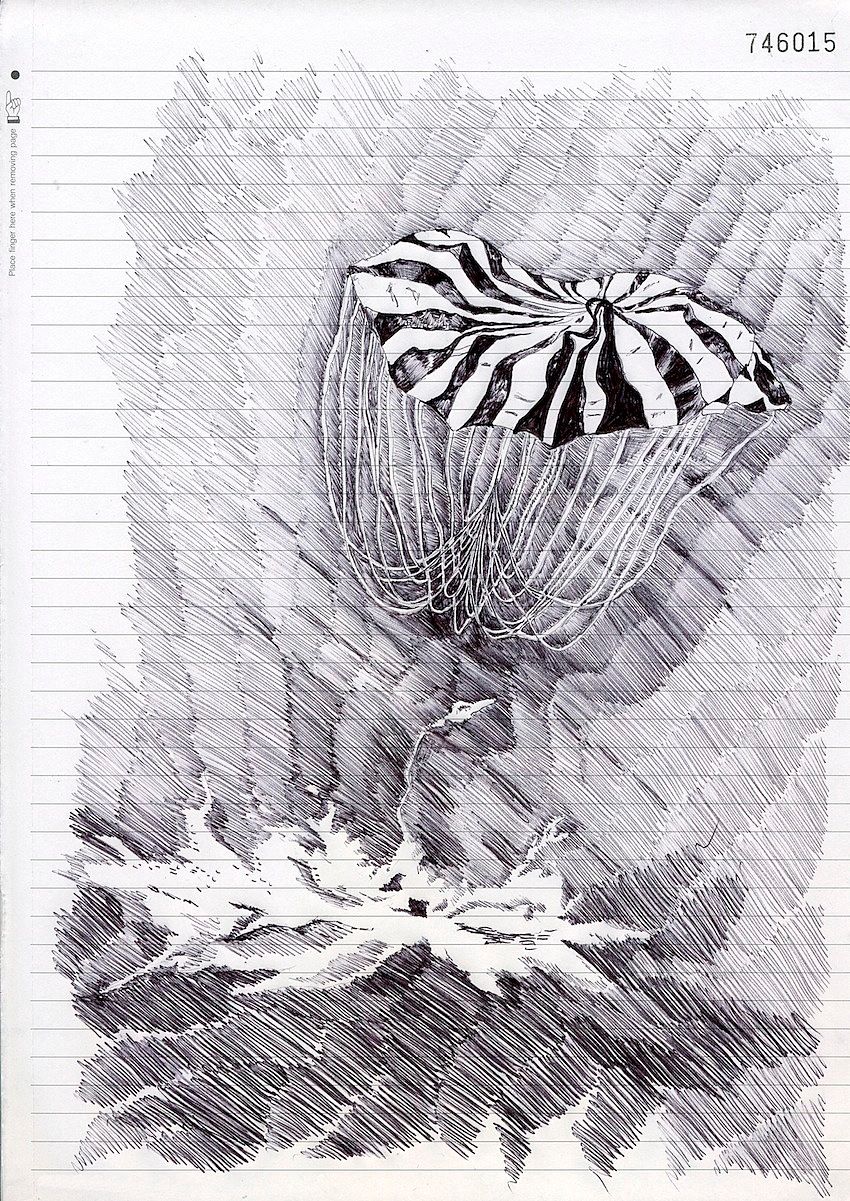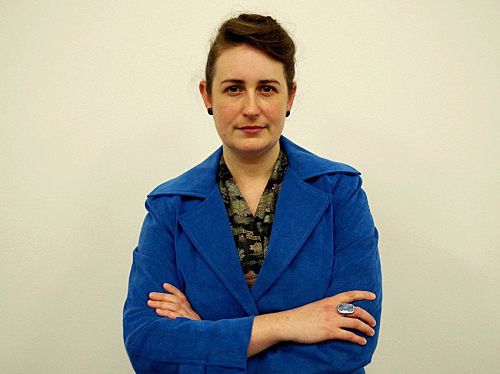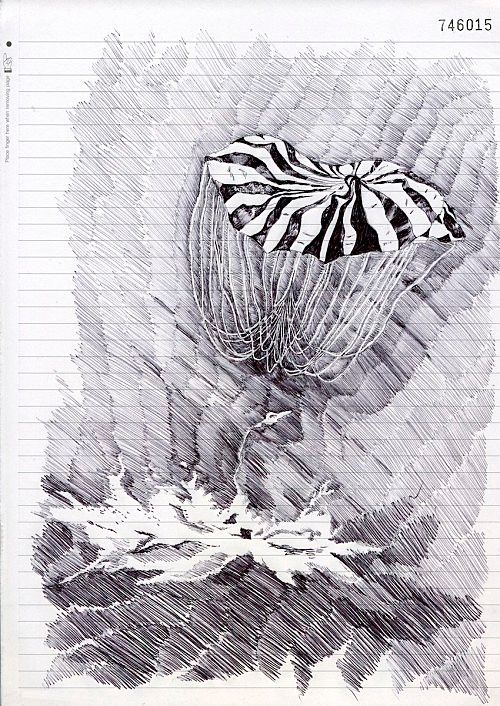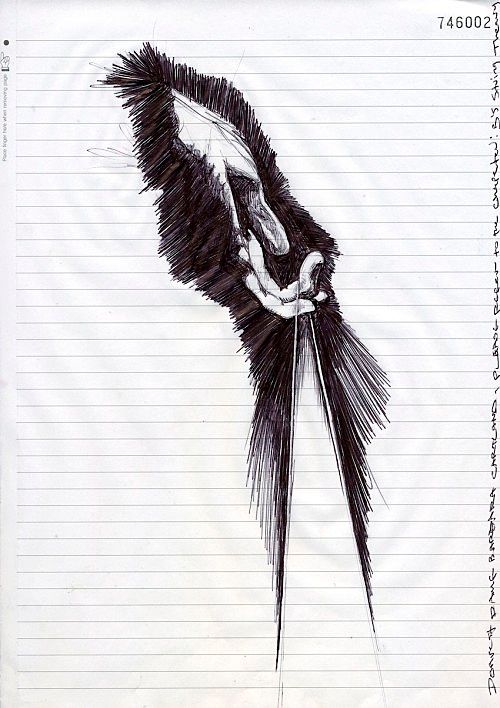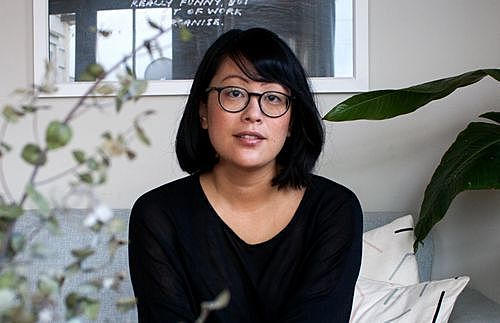The Stuff of Our Lives, The Attic Clutter: An Interview with Rachel O'Neill
Ahead of the launch of her debut collection, One Human in Height, Rachel O'Neill talks about poetry, reviewing and being an influence-hedonist.
Asked to describe her debut poetry collection, One Human In Height, Rachel O'Neill talks about strangeness. She talks about characters (a botanical species, the Kafka Diver, that lures in guests for an unusual holiday on the sub-alpine platform) and she talks about situations (a talent show called Wicked Witch Idol, in which participants have to ‘melt convincingly centre-stage'). She talks about the tangible. "I realised that while I love language poetry," she says, "and poetry that doesn't necessarily prioritise meaning, I'm just not that good at writing it."
One Human in Height emerged half-formed in 2008, the year Rachel finished her MA in Creative Writing. "I had completed a manuscript that was really half a collection of short stories and half of poems. The short stories were more confident, and had a sense of humour, whereas the poems were pretty abstract, hinting at meaning and narrative without quite making it available to the reader." She worked on a collection of stories before returning to poetry, and found that her interest in the strangeness of experience "found an outlet just as much in the prose poem."
It's also found an outlet in her art, and her collection is accompanied by a selection of drawings from Love Letters to Barbara Cartland (2006). "There are 23 drawings from the series," she explains, "that I made as part of my first solo exhibition 'Hallways of Lives' at Enjoy Gallery. I’d previously done a series of Love Letters to Stephen Hawking, and the Barbara Cartland letters were similarly written by a character, code-named ‘L’, who asks Cartland why she never wrote space romances, and proceeds to give her some outrageous book ideas. The drawings mix space exploration imagery and 1970s car advertising imagery, and I was interested in creating a narrative that established certain mythologies of time and place and that connected the language of science and romance writing."
Closer and closer
She is a parachutist and for her own reasons approaches
her family reunion from above. Falling, she spies a young
girl who looks cool, dressed in fluorescent pink bike
shorts, hair tied up with a scrunchie, which is a sort of
mini deflated parachute for the head. It’s a sign that I’m
landing in the middle of the right reunion, the parachutist
thinks. Also she can see a group near a smoky BBQ,
waving. The parachutist can’t yet confirm that she’s
landing in the midst of the right people but she likes the
look of them, the way they’re starting to part a little so
that she can land safely amongst them. Please, let them
be my family, she thinks, because whoever they are,
they’re getting closer and closer.
In the blurb for One Human in Height, Christchurch poet Bernadette Hall remarks that a question arises about how we locate ourselves “In the stuff of our lives, the attic clutter, the absurdity, the ‘really creepy shocks of inheritance’.” To this, O'Neill comments: "I think we sift through the drift of inheritance to find what is magnetic, useful and active. We get pretty inventive too. For me the drawings and the poems communicate the tragicomedy of the attempts we make to become one human in height in the midst of our inventions, past, present and yet-to-be." Ahead of the launch of her collection this Friday, we chatted to her about this: about the past, the present, and the fringes of her work.
Who and what influences your writing?
Aside from some great mentors, I’m really an influence-hedonist. I’m influenced by the Coen brothers and the conversation happening around sex positive porn. I’m interested in things that emerge from collaboration, probably because I like to be involved in collaborations. Since 2010 I’ve been part of All the Cunning Stunts, an art collaboration that explores the representation of sexuality, particularly queer representation and experience, and gender politics. I like looking for connections across art forms, and social and political arenas. Perhaps when it’s hard to understand something using existing structures you have to use your brain, and team up with other brains. When brains team up, action – responsible action – is possible as individuals acknowledge that they exist, think, and act because of others, rather than in spite of others. I guess I look for moments where this plays out in exciting and strange ways. At one time I thought I might be a recovering romantic, but I guess there was never any genuine recovery.
When do you write best?
All the time. Generally I over-commit myself, so unwittingly tie myself to writing and thinking, however, whenever. I’d say I get my best ideas when I’m in transit, on the train say, or when I go for a walk, or step away from the computer to open the door to let the dog out. But you have to put the average and bad writing down on screen or paper before the good writing taps you on the shoulder.
You've written critically about books and art. What differences have you found between these two types of writing?
In the past I’ve tended to respond to artworks by writing pieces that are basically creative non-fiction. My book reviews so far have been more straightforward responses. I often like to find a conceit that I can explore an artwork or book through. For a review I wrote of Eleanor Catton’s The Luminaries in Metro recently I related aspects of the book to quantum mechanics. Obviously the metaphor is going to breakdown at some point, and I only have a layman’s understanding of particle physics, but I always hope that by that point I’ve done enough to describe what I’m seeing, what I think the work is doing, and where I’m coming from in my reading. I hope that by this point a decent sense of the work, as put forward by me, can be considered by the reader.
I like to approach art work through writing creative non-fiction because I can explore quite openly my experience of understanding it in time with the reader. When an artwork is abstract, hermetic or impenetrable to me I basically just say that and then start noticing things about it that might help me make more sense of what it’s doing. Perhaps good writing suggests what the artwork’s comfort zone is, and how it might function outside that comfort zone. Whether it can or should function outside that comfort zone is up for debate. Writing about art and books is challenging. It’s also a valuable part of visual and reading culture as it encourages discussion. Writing and discussing artworks advances the ethics of seeing, the collaborative scope and power of looking and thinking individually and collectively. It's also great to put it out there that you took pleasure in a cultural experience or artwork.
You raised money to publish this book through a Pledgeme campaign. What motivated that decision, and was there anything about the process that surprised you?
I helped run a crowdfunding campaign through my job at the Book Council a few years back and could see what a great way it was to connect with existing supporters, and new supporters, and also reward their generosity. Hue & Cry Press used PledgeMe to raise funds to publish their debut book by Sarah Jane Barnett, A Man Runs into a Woman. They exceeded their target and created a lot of buzz in the process. For my book we asked for pledges that would help cover the print costs. Readers could buy One Human in Height in advance and also pick up some special treats, like a signed copy of the book, badges, and posters, even an original drawing by me for top pledgers.
It was an amazing feeling seeing 49 people generously support us and show enthusiasm for the book and what we were doing well before it was released. I like that through crowdfunding people can get involved in supporting something a bit earlier on in the process. It really works to establish a community around a project, and I like that you can reward people for being fans and wanting to be part of the experience.
Girl makes love to girl playing the accordion
Naturally it goes viral. It’s an advantage in the end that one
is shorter. Are those bellows? the girl not playing the
instrument asks. Yes, the girl playing the accordion says,
and here is the squeezebox. What a harmonic sound the
body makes, they say together. The tuning is personal, says
the musician. I like the silent air button, the other girl says,
and the gills. Do you mean the grilles, which let the air
inside? the girl asks as she adjusts her shoulder straps.
Exactly, the girl beside her vibrates as she absorbs the
automatically coupled chord.
One Human in Height launches this Friday 11 October at City Gallery Wellington.
